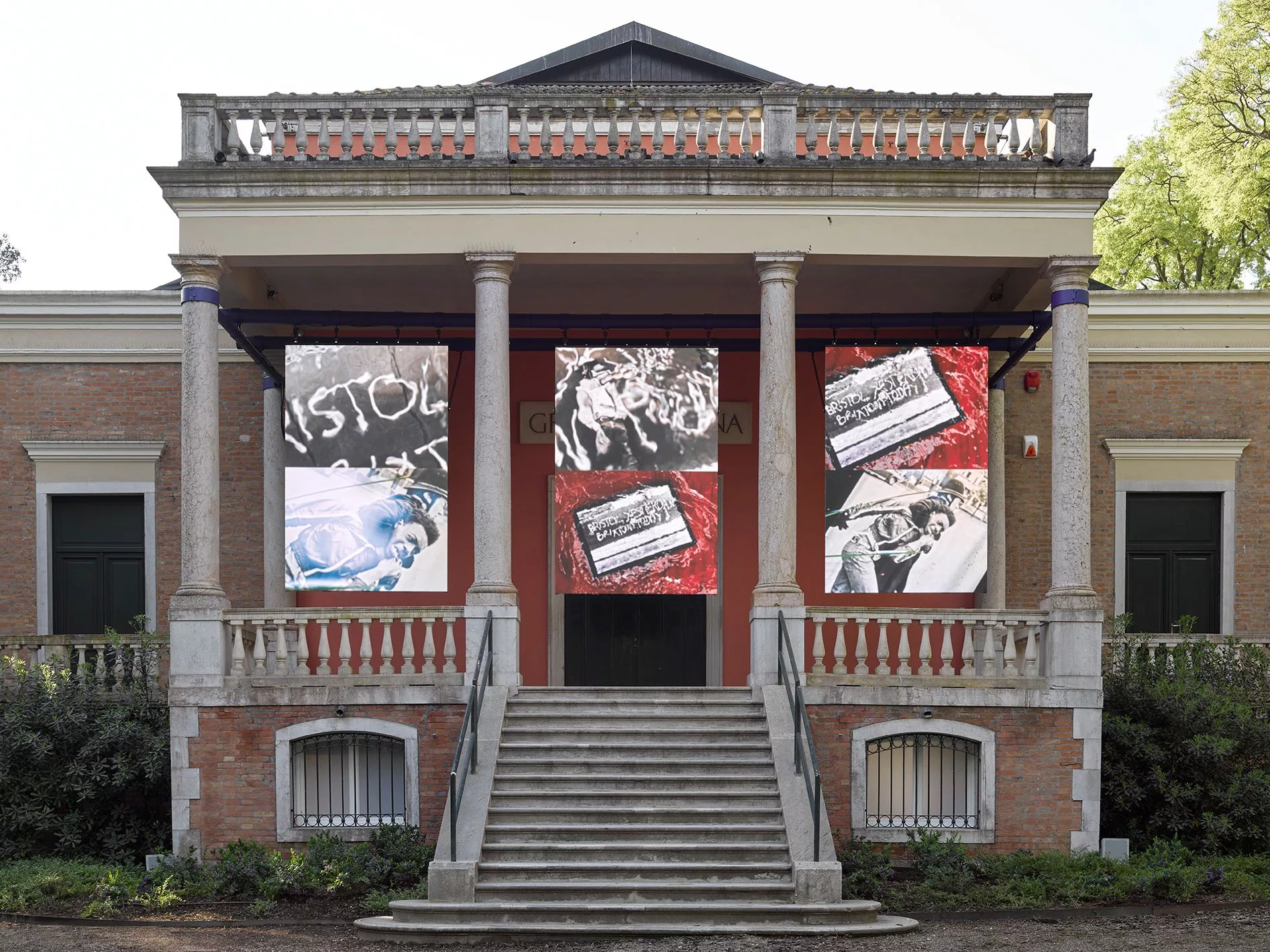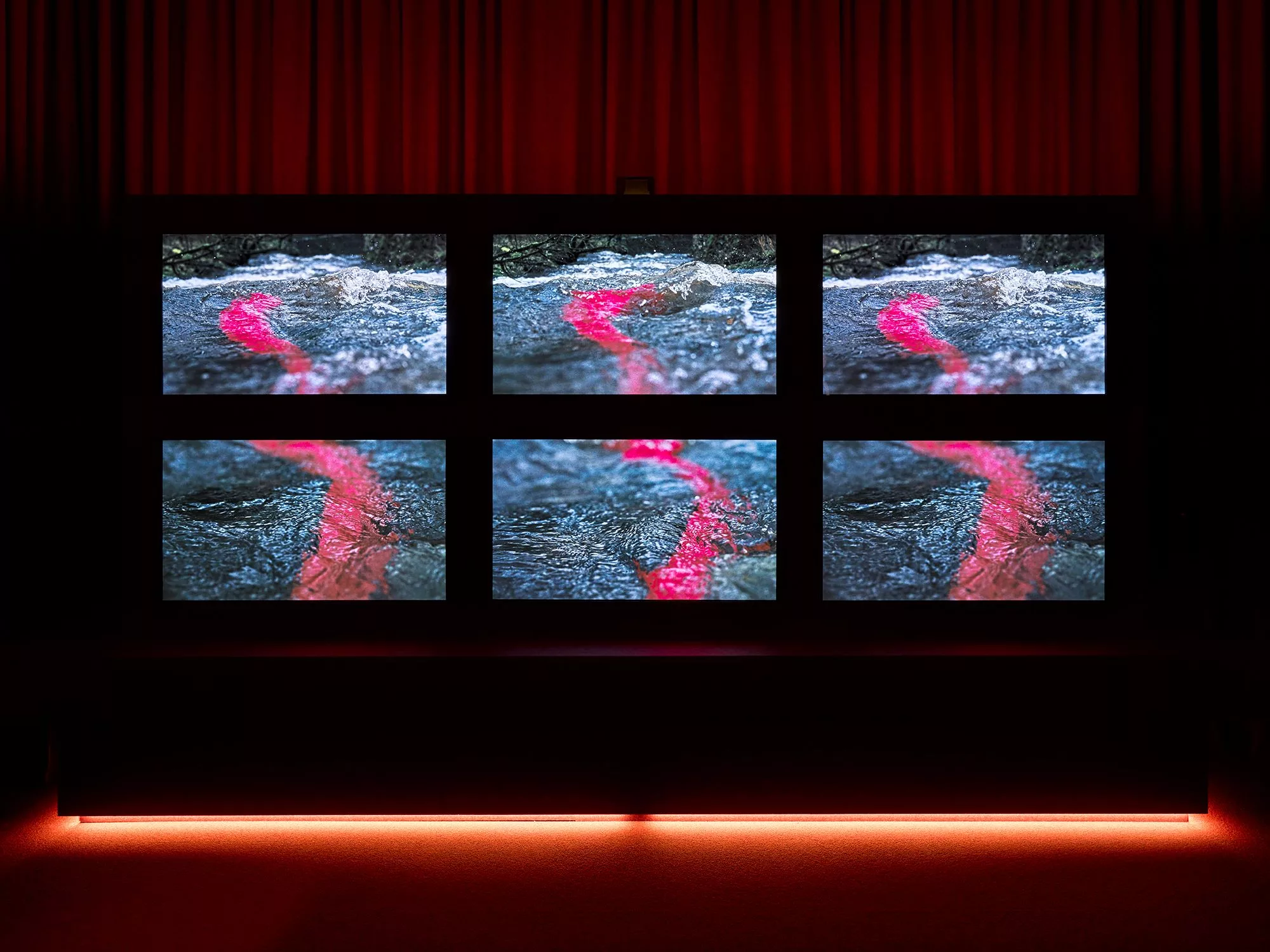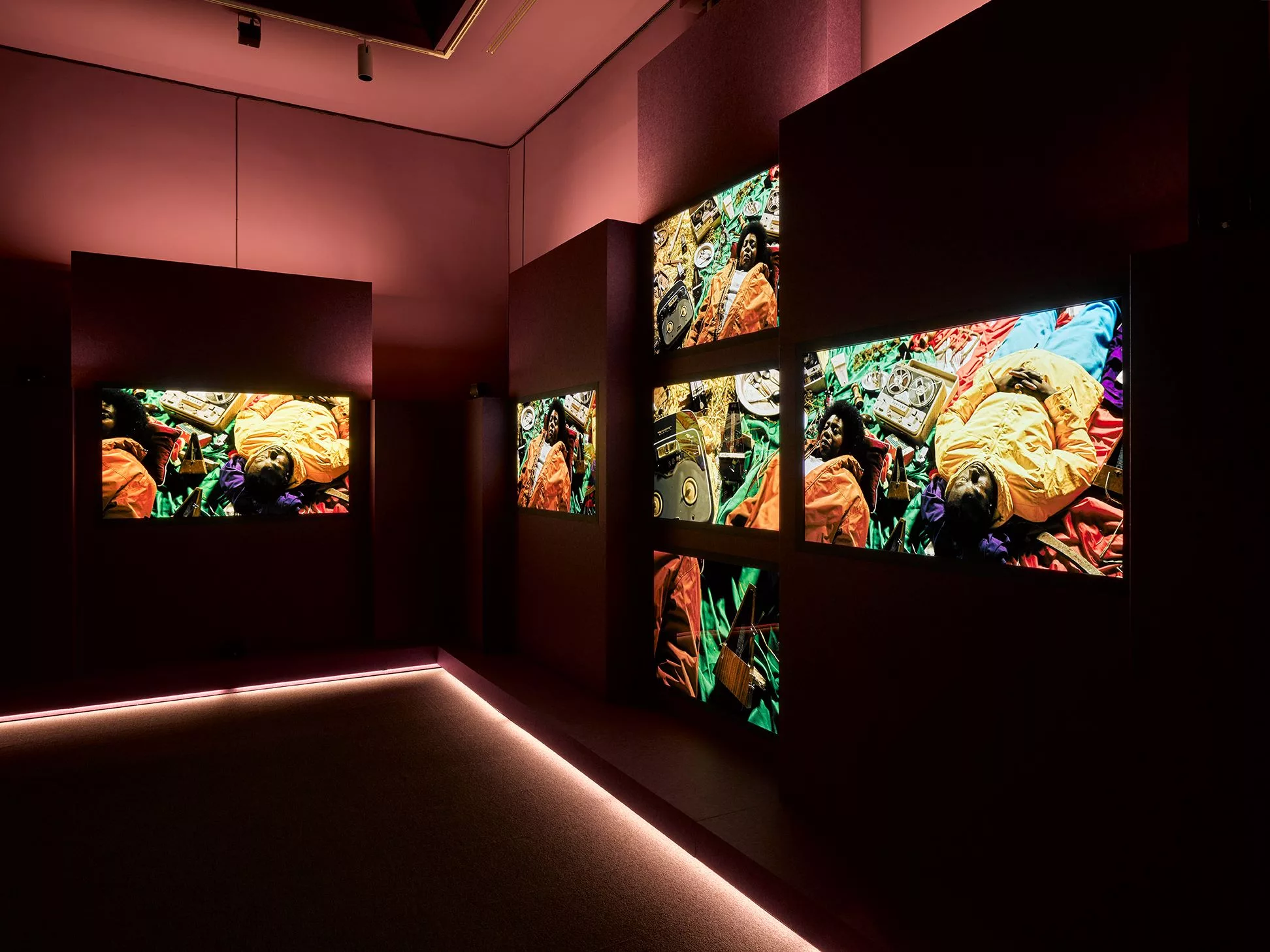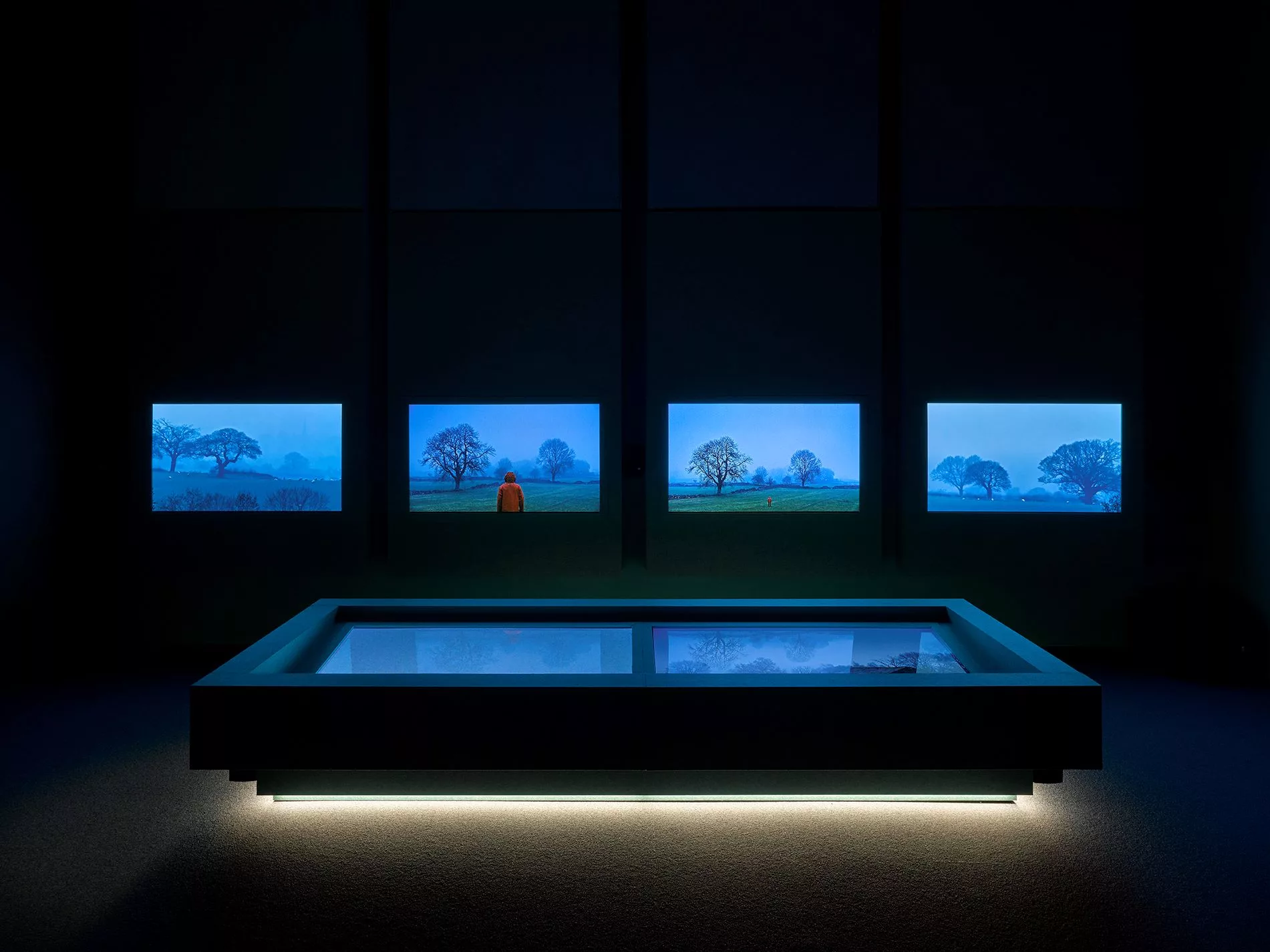

I meet John Akomfrah on the steps of the British Pavilion on the opening day of the 2024 Venice Biennale. ‘Oh it is you’ (I had been lingering around the front, waiting for our start time). He greets me warmly, and we walk together up the stairs of the pavilion, under the front-facing screens which form CANTO I part of his new work, Listening All Night To The Rain. We enter a small room, which seems so far away from the biennial queues and art world chaos that is unfolding outside, to talk.
Akomfrah is representing Britain in the 60th edition of the La Biennale di Venezia. His works are an immersive expanse of film and sound. Sixty-two screens populate the exhibition, which is split into eight installations defined by Akmofrah as ‘Cantos.’ The installations seep into one another; sound and image travel around the halls of the cavernous pavilion. Unusually, instead of bringing the audience in through the main doors, he redirects them around the back of the building, where they enter the exhibition through the basement. Akomfrah tells me,
“I thought it was really interesting that you go in from this subterranean position, and you feel like you’re in the belly of the work or the history – and you come up, but you never have to acknowledge the front, the entrance, the grandness. I’m fascinated by the unintended and being consequential, of course – if you’re a person of colour, you’re not supposed to be of any consequence, so I’m quite fascinated by being consequential. And it felt to me that, in a space so haunted by so many ghosts, so many shows, I needed to interrogate what they felt was not of consequence. And I didn’t remember anyone ever thinking of coming through the basement up. Plus – this is British culture, and usually, the basement is where these things start.”

Films of water trickle through the basement space, washing over clocks, histories, artefacts. Moving upstairs, I see larger landscapes that throb with memories of migrant communities. The exhibition mines collective stories and memories and plays them back, in loops, in swelling song, in repeated scenes and videos, a patchwork of stories layered over and over. I ask John about the responsibilities in this, what it means to hold and share collective memory (particularly from the migrant diaspora) and the importance of collective memory – how, as a community, we might input into that in order to empower a personal history that can often be easily overdrawn or overwritten.
“The question of collective memory is always frowned upon by theoretical purists. But actually, when you unpack the complex ways in which people find community, identity, and agency, it seems to me that there’s some understanding of a notion of collective memory that underpins much of that. If only because it’s something that you can say we don’t want. If you’re a figure of colour or a trans figure – how do you know what you’re against, or how do you know that something’s not working for you unless there was something, some notion of collective memory which is at work? I’m interested in these phobias and anxieties and dreams and fears and how they’re formed because it’s not without foundation a lot of the time. It seems to me that they’ve become embodied forms this way… like when songform carries a collective wish.”


We move on to talking about trauma in landscape: the ways in which our experiences are held by the spaces that surround us and how, much like in the extensive film works that make up the exhibition, he collaborates with the landscape when going through the process of making work.
“I’m interested in these spaces of melancholy and spaces of trauma – I don’t know why they speak to me, but they do. They do. I find deep affinity with these spaces because I can hear them, I can hear what they’re saying, and I’m willing to listen to what they say. Most landscapes actually have voices, and they’re quite distinct, and they offer solace and advice and respite – but also commandments of how they want to be seen. Every time you make a mistake, you have to apologise and start again.”
With the interview over, I leave our small room and head back out down the stairs. I hear the sounds of the ANGA (Art Not Genocide Alliance) protest coming towards me. For a fleeting moment, amidst the art world gossip and the chatter of pleasantries, these voices of resistance against the trauma that is currently being inflicted upon Palestine become another part of the hard and forgotten histories Akomfrah has woven into the British Pavilion.
Written by Lisette May Monroe






